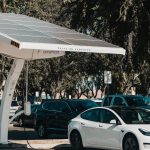Determining the upper limit of a neutron star’s mass is no trivial feat. Professor Fan Yizhong and colleagues from China’s Purple Mountain Observatory have put forth groundbreaking research indicating an upper mass limit of 2.25 times that of our own Sun for non-rotating neutron stars. Their findings have imperative consequences for distinguishing between neutron stars and black holes, and for understanding more about the physics that govern these dense remnants from the death of supermassive stars.
Research on neutron stars has been ongoing for decades, with scientists striving to understand these mysterious objects. The quest to pinpoint the exact mass at which a neutron star becomes a black hole has involved numerous observations and theoretical models. Past studies have relied on X-ray and radio observations to estimate masses of neutron stars in binary systems, along with the study of gravitational waves emitted by neutron star mergers to provide insight into the nature of these dense objects. The recent research by Professor Fan’s team builds upon this knowledge, utilizing sophisticated instruments and gravitational wave data to refine the limits of neutron star mass.
What Determines a Neutron Star’s Fate?
When a star of sufficient mass ends its life cycle, it may leave behind a neutron star or transform into a black hole, a decision hinging on its final mass. A neutron star’s existence is precarious, balanced against the Oppenheimer limit, also known as the Tolman–Oppenheimer–Volkoff (TOV) limit. This critical threshold dictates the mass at which the star can no longer support itself and collapses into a black hole. Professor Fan’s team delved into this concept, employing data from gravitational wave observatories and the Neutron Star Interior Composition Explorer Mission (NICER) to refine the mass threshold for neutron star stability.
How Do Scientists Measure Neutron Star Mass?
Investigations into neutron star masses involve multi-messenger astronomy, which combines gravitational waves with electromagnetic data to ascertain the physical characteristics of these objects. The team’s methodological approach included utilizing models of the neutron star equation of state—a model describing the conditions of matter within the star. The precise measurements and models indicate that a neutron star nearing 2.25 solar masses would still be considered such, but as it approaches a mass of 2.5 solar masses, it likely transitions into the realm of the lightest black holes.
Why Do These Findings Matter?
The research spearheaded by Professor Fan offers further insight into the nature of astrophysical objects and has implications that stretch into the realm of cosmology. For instance, the mass cutoff for neutron stars ascertained by the team could provide an alternate method to test the cosmological model and the expansion rate of the universe, known as the Hubble Constant. This finding can potentially influence our understanding of the universe’s history, from the Big Bang to the present day.
Useful Information for the Reader
- A non-rotating neutron star’s mass cannot exceed 2.25 solar masses.
- Masses above 2.5 solar masses likely indicate the lightest black holes.
- These findings could impact measurements of the universe’s expansion rate.
The distinction between neutron stars and black holes has long challenged astronomers. This new determination of the mass limit is a leap forward in the field of astrophysics, providing a clearer boundary between these two kinds of celestial objects. It enables scientists to categorize observed phenomena with greater accuracy and enhances our understanding of the fundamental workings of the universe. As technology and methodologies advance, the precision of such measurements improves, shedding light on the evolution of stars, the fabric of spacetime, and the underlying physics governing it all.










